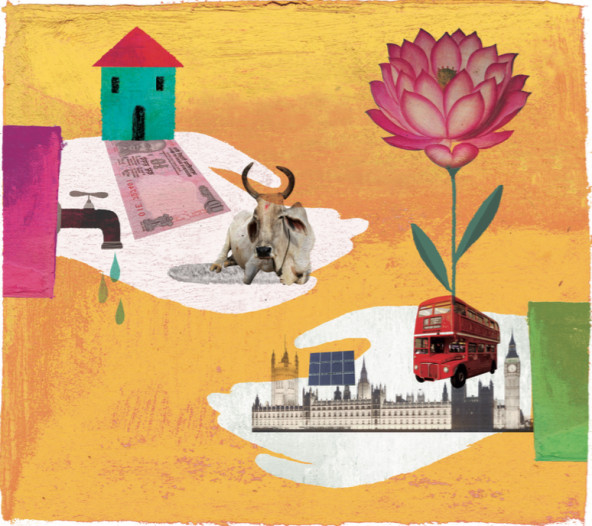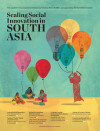
There are many ways to scale up an approach so that it is widely adopted throughout society. You can pass a law to establish a right, and then hope that the state is competent enough—and civil society assertive enough—to make that right a reality. You can work through a single organization, in the way that Ford, Google or McDonald’s grew in the private sector. You can move more organically, through replication and adaptation.
Scaling Social Innovation in South Asia

This special supplement examines the lessons that the Bangladesh-based NGO BRAC and other leading organizations have learned about scaling up social innovations in the developing world, especially in South Asia.
You can also find partners and work together to turn an approach into a trend or a common practice, in the manner of the microcredit movement in 19th-century Europe and late 20th-century Asia. Or you can create well-funded institutions dedicated to scaling up ideas, like Big Society Capital in the United Kingdom, which funds dozens of social-venture intermediaries, which support ventures that are themselves embedded in hundreds of partnerships. These combined-effort methods foster the growth of ideas and models without creating monolithic organizations. They support broad learning, as they enable experimentation and improvement. They also support efforts to tailor successful approaches to local needs.
In this article we look at two social intermediaries—the National Endowment for Science, Technology, and the Arts (Nesta) in the United Kingdom and the Rural Support Programmes Network (RSPN) in Pakistan. These organizations have taken different approaches as they seek to spread promising ideas and models. Both are exemplars, but their choices—and the contexts in which they operate—offer important lessons to others seeking to foster social change.
Nesta
Nesta’s origins can be traced to its founding chairman, David Puttnam, who believed that the United Kingdom was failing to support innovation and needed to find an effective way to incubate promising ideas. With the support of the labour government in 1997 and the conviction that a dedicated endowment was the way to provide long-term, politically neutral funding for riskier ventures, NESTA (as it was first known) came into being in 1998 through an act of parliament, as a public body funded by the national lottery with initial funding of £250 million.
Initially, NESTA mainly backed individuals. Then it started investing in new ventures, and later it began influencing the environment for innovation more broadly. Although much of its work was high-risk, there were plenty of successes—people who went on to great creative achievements, investments that delivered high financial returns, and new products and new ideas that entered the mainstream.
In 2010 the government determined that NESTA no longer needed to be a public body; it was well suited to be a charity. So in 2012, with new CEO Geoff Mulgan (co-author of this article) at the helm, the organization transitioned to a charity and changed its name to Nesta. Today, it invests in commercial companies and social enterprises, undertakes research, and supports large-scale programs for social benefit in health and education both in Europe and globally.
With nearly 200 staff and an endowment of more than £350 million, Nesta often partners with others—including city and national governments, foundations, and companies. For example, Nesta led the drive in the United Kingdom to teach children computer programming, by persuading government to introduce computer science into the curriculum, supporting coding clubs throughout the country, investing in educational technology firms, offering online tools through a partnership with Mozilla and Microsoft, and working with the BBC to push “digital making” through documents, soap operas, and Web tools.
To help get its ideas and knowledge out to a wide audience, Nesta makes an effort to be transparent about its work and share it with others. It tries to distill its methods into easy-to-use guides—for example, on how to run challenge prizes or civic labs—demystifying innovation and helping practitioners to achieve more impact.
Rural Support Programmes Network
RSPN, for its part, has become widely known in the Global South, where it and other successful intermediaries in South Asia are beginning to stand out for the sheer range and extent of their recent examples of scaling up social innovations. Some intermediaries have become expert at “shape shifting”—tailoring their work to fit the unique characteristics of the region, including states that don’t meet the needs of their large and growing populations, and flows of funds from global development agencies and foundations that have created space for innovation and provided access to highly educated and motivated people.
RSPN traces its roots to Pakistan in the late 1970s, when two visionaries, Shoaib Sultan Khan and his mentor Akhtar Hameed Khan, set up a rural support program (RSP) in the northern mountainous regions through the Aga Khan Foundation. The Aga Khan RSP (AKRSP) had two objectives: to double incomes for the community of roughly one million, and to develop replicable approaches for future adoption in other parts of the country, and maybe beyond.
A World Bank evaluation of the program found that incomes in the AKRSP areas had indeed doubled since the program began, and in 1989, AKRSP replicated the program by creating the Sarhad Rural Support Programme at Peshawar. In 1992, the National Rural Support Programme was set up in Islamabad.
With support from external donors, including the US Agency for International Development and the UK Department for International Development, the organization scaled up rapidly, launching RSPs across the country and formally creating RSPN in 2000 as an official body dedicated to being the mechanism through which the network exerted in uence and shared knowledge. Today there are 11 RSPs working in more than 90 percent of the districts of Pakistan, where they have mobilized about 38 million people.
RSPN connects government, civil society, philanthropy, and economic development in the interests of achieving common social goals. As self-governing organizations, the 11 individual RSPs have been allowed to have control over their own finances and decision-making process. Most often, this system works well, but autonomy can sometimes be challenging. For example, the Balochistan RSP enjoyed initial success, but then encountered difficulties when donors and government officials who were on its board encumbered its decision-making processes and caused a period of programmatic decline. With a change of leadership at Balochistan RSP, the program began to recover. Today, it has become the largest civil society organization in the Balochistan province.
Same Difference for the North and South?
Both Nesta and RSPN were launched by visionaries who saw gaps in society and rallied to catalyze change. Both managed to secure independent and dedicated funding sources and move away from direct government management, though both have strong influence on public policy. For example, Nesta’s Plan I campaign for the United Kingdom and Europe to foster sustainable economic growth by supporting innovation and the growth of creative industries has influenced policy with regard to innovation. And RSPN’s campaign is leading to the provincial governments’ acceptance of the RSP approach to community-driven development. Governments of Sindh and Khyber Pakhtunkhwa had supported the initial scale-up of RSPs. Now the European Union and the government of Sindh are planning full scale-up in 12 districts of the province.
Beyond those commonalities, there are great differences in the ways Nesta and RSPN operate. Although Nesta has one central core team (along with teams in Scotland and Wales, and a subsidiary in the United States), it has no plans to expand further into regional offices. It is still a frontline organization, looking to link the micro with the macro, whether it is empowering patients to manage and co-manage their health care or asking targeted communities to blog about their progress to funders. By contrast, the RSPN has devolved power to individual RSPs and moved beyond figureheads to recruit talented local players in order to create individual, differentiated, localized organizations that adopt common principles but cater to their unique contexts.
Three Elements Drive Impact at Scale
Nesta’s and RSPN’s experiences, along with the experiences of other social intermediaries working in different areas in the world, suggest that three elements are needed in order to achieve impact at a large scale.
The first is what we call effective supply—an approach to meeting a need that actually works and is better than available alternatives. It’s rare for any idea to be able to prove its worth immediately. But over time, every successful scaling has involved the evolution of an idea, testing, and proof. Philanthropy has an important role to play here; donors often provide the time, space, and resources that organizations need to turn a promising idea into an expandable form.
The second is what can be called effective demand—the presence of someone or some organization willing to pay enough for an approach to spread. That might be consumers seeking new heating equipment, for example, or it might be government seeking to solve health problems in a particular region. In much of the world, issues such as primary and secondary education depend on governments for aid, given governments’ ability to raise taxes. Philanthropy rarely plays a significant role here, if only because its scale is usually very small compared to that of states and markets.
The third element is a vehicle. This can be a charity or a social enterprise, or it can also be a federation, a network, or a coalition, coordinated by an organization such as RSPN or Nesta. Our sense is that RSPN and Nesta are the models to look toward as we seek increasing impact, driven by increasing improvement in how intermediaries work, smart combinations of better organizational tools, and creative use of technology.
Support SSIR’s coverage of cross-sector solutions to global challenges.
Help us further the reach of innovative ideas. Donate today.
Read more stories by Khaleel Tetlay, Zoya Shabir Siddiqui & Geoff Mulgan.

